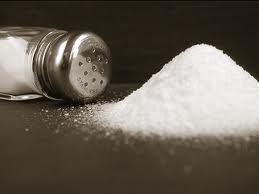The Scoop on Salt
August 22 2013

A diet high in salt is a major cause of heart disease and stroke. Increased blood pressure causes an estimated two thirds of all heart attacks around the world. The average person consumes about 4000mg of salt a day – that’s over 1 1/2 times the recommended amount of 1500mg, which is roughly 2/3 teaspoon.
What can you do to lower your sodium intake? It’s easy, eat at home. Studies have shown that 77% of sodium comes from processed foods and food eaten outside of the home.
To help reduce added, unnecessary salt:
* Cut down on prepared and processed foods
* Eat more fresh vegetables and fruit
* Reduce the amount of salt you add while cooking or baking
* Prepare your own meals at home
MealEasy’s Heart Healthy Meal Plan and Diabetes Meal Plan limit the sodium per meal to fewer than 480mg while still providing great tasting meals. Our Vegetarian Meal Plan and our Balanced Meal Plan also offer meals that are well under the daily recommended levels.
Cutting Down on Salt
North American diets are generally high in salt, so even those with normal blood pressure can benefit from reducing their salt intake. People with high blood pressure or who belong to certain ethnic backgrounds need to be extra cautious. Research studies have shown that First Nations peoples and those of African or South Asian descent tend to have higher rates of high blood pressure and for that reason are at greater risk of heart disease and stroke than the general population.
Here are three ways to reduce salt in your diet:
Cook from scratch
One of the best ways to control salt intake is to prepare more home-cooked meals. Buy ingredients to make homemade soups, casseroles and sauces rather than using commercially prepared or canned varieties.
Read the Nutrition Facts label
On packaged and processed foods, look for lower-salt varieties whenever possible no more than 480 mg per serving. In the ingredients list, watch out for other forms of sodium under these names: monosodium glutamate (MSG), baking soda, baking powder, disodium phosphate and any compounds that have sodium in its name.
Avoid foods with high salt content
It’s not so much the salt shaker that is to blame as it contributes only about 10% of total consumption. The real culprit is processed foods, including fast foods, prepared meals, processed meats such as hot dogs and lunch meats, canned soups, bottled dressings, packaged sauces, and salty snacks like potato chips.
FOOD FOR THOUGHT
Salt’s ability to preserve food was a foundation of civilization. It eliminated the dependence on the seasonal availability of food and it allowed travel over long distances. It was also a desirable food seasoning. However, salt was difficult to obtain, and so it was a highly valued trade item, which followed the pull of economics along salt roads such as the Via Salaria in Italy, some of which had been established in the Bronze Age. Until the twentieth century, salt was one of the prime movers of national economies and wars.
During the late Roman Empire and throughout the Middle Ages salt was a precious commodity carried along the salt roads into the heartland of the Germanic tribes. Caravans consisting of as many as forty thousand camels traversed four hundred miles of the Sahara bearing salt to inland markets in the Sahel, sometimes trading salt for slaves: Timbuktu was a huge salt and slave market.
Aside from being a contributing factor in the development of civilization, salt was also used in the military practice of salting the earth by various peoples, beginning with the Assyrians.
The Roman Republic and Empire controlled the price of salt, increasing it to raise money for wars, or lowering it to be sure that the poorest citizens could easily afford this important part of the diet.
It was also of high value to the Hebrews, Greeks, the Chinese and other peoples of antiquity.
(http://en.wikipedia.org/wiki/History_of_salt)
